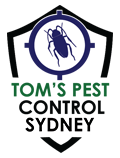White-footed ants, as the name suggests, have light-coloured feet. This species does not bite or sting but is considered a nuisance by homeowners. You can often spot them foraging in the kitchen, bathrooms, and other areas. Mature colonies of white-footed ants may have about 8,000 to 3 million individuals.
What Is White Footed House Ants?
You won’t mistake these ants for any other kind if you come across them. They have a distinct look, with black or brown bodies around 1/8 inch in length. One thing to note is that their thorax lacks a spine, giving them an unevenly rounded shape.
This species has six pale yellowish-white feet and antennae, which allow them to explore their surroundings. They are a common species and can often be seen carrying out their daily activities in and around homes or gardens.
White-footed ants tend to nest in dead wood, piles of lumber, firewood, bricks, stones, and trash. They also thrive in areas with dense vegetation or trees. In households, these ants can reside in wall voids, attics, around skylights, atriums, and even plant pots.
These ants can establish multiple colonies in various locations, exchanging workers and food as needed. They have a strong presence in urban and rural areas, and their spread to new locations can be caused by shipping containers or nursery stock.
These insects possess unique reproductive systems. They form enormous colonies by swarming and budding. You can find multiple queens and thousands of diligent workers in each colony.
Swarming occurs when winged reproductive ants fly to find a mate. They establish a new colony after the mating process. On the contrary, budding occurs the queen and worker groups leave their old colony to start anew in a new nesting area. Here reproductive ants mate again and build a new colony.
Eating Habits
White-footed ants have diverse taste buds and prefer sweet foods, dead bugs, and protein-rich meals. While scurrying along the trunks and branches of trees and shrubs, they search for nectar and honeydew produced by sap-sucking insects. These ants are diligent foragers who search for multiple food sources.
Signs of White-Footed House Ant Infestation
You can notice trails of ants going to and from their nesting sites. These pesky critters lurk in damp places such as bathrooms, kitchens, old termite galleries, and skylights. It may indicate an infestation if you often see them running around these places in your home or office space.
White-Footed Ant Prevention
You can remove hiding spots like rocks, concrete objects, and wood to prevent pesky white-footed ants from invading your property. Also, you can seal up any cracks or crevices outside your building to stop them from getting in. To ensure maximum protection, consider enlisting the help of our licensed pest control professionals. They will help to create a prevention plan or tackle any current infestations.
Tom's Pest Control – The Ant Removal Experts
At Tom’s Pest Control Sydney, our skilled technicians are equipped with the latest industry training to quickly tackle any ant infestation. We use safe and effective treatments to ensure your home or business remains ant-free. Contact us to schedule your appointment today.
Our white-footed ant removal service is designed to eradicate the infestation without causing any disruption to your home or business. We create a specialised solution that targets these ants, ensuring your family or employees are safe and sound.
Call Us!
You can trust Tom’s Pest Control for effective ant removal at your property. Contact us at (02)8073 9252 for a free estimate.
Frequently Asked Questions
How to identify a white-footed ant?
You can learn to spot a white-footed ant by checking out its legs or tarsi. These extremities are a distinct light yellow or yellowish-white shade that sets the ant apart.
How do white-footed ants behave?
White-footed ants are highly social insects known for creating large colonies with multiple queens. These colonies are filled with fertile members, giving them remarkable reproductive potential. Unlike other ants, this species doesn’t bite. Instead, they prefer to feed on sugary substances, such as honeydew. However, they also consume insects and proteins on occasion.
How serious is the white-footed ant infestation issue?
White-footed ants can be tough to remove from your home. Though they can’t sting or bite, you should remove them as soon as possible. A colony on your property can house up to 3 million critters. Spotting them is easy when there is a large crowd. In addition, they tend to move in long lines along walls, floors, and countertops. Thus, removing them is essential to keep your environment pest-free.




